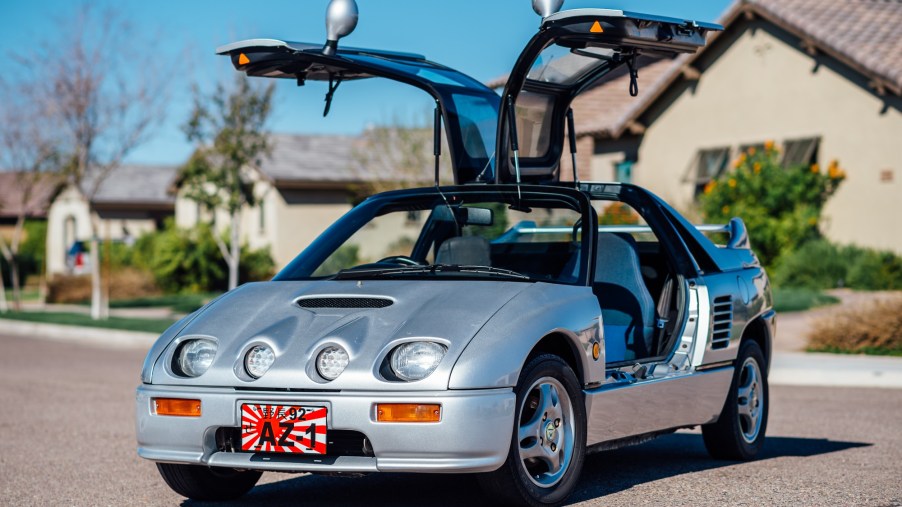
The Autozam AZ-1: Supercar Design in a Tiny Package
There’s no shortage of quirky vehicles in the world if you look hard enough. From Britain, there’s the Morgan 3-Wheeler. France produced the 4-wheeled Lazareth LM10 motorcycle. From the US, there’s the pint-sized AMC Mighty Mite. And arguably, the rear-engine Porsche 911 also counts. But it’s perhaps Japan that’s best known for building unconventional cars. For instance, Toyota once offered a supercharged, mid-engine, all-wheel-drive minivan. But it’s perhaps the kei trucks and cars that often stand out the most. And, there was once even a kei supercar: the Autozam AZ-1.
What is the Autozam AZ-1?
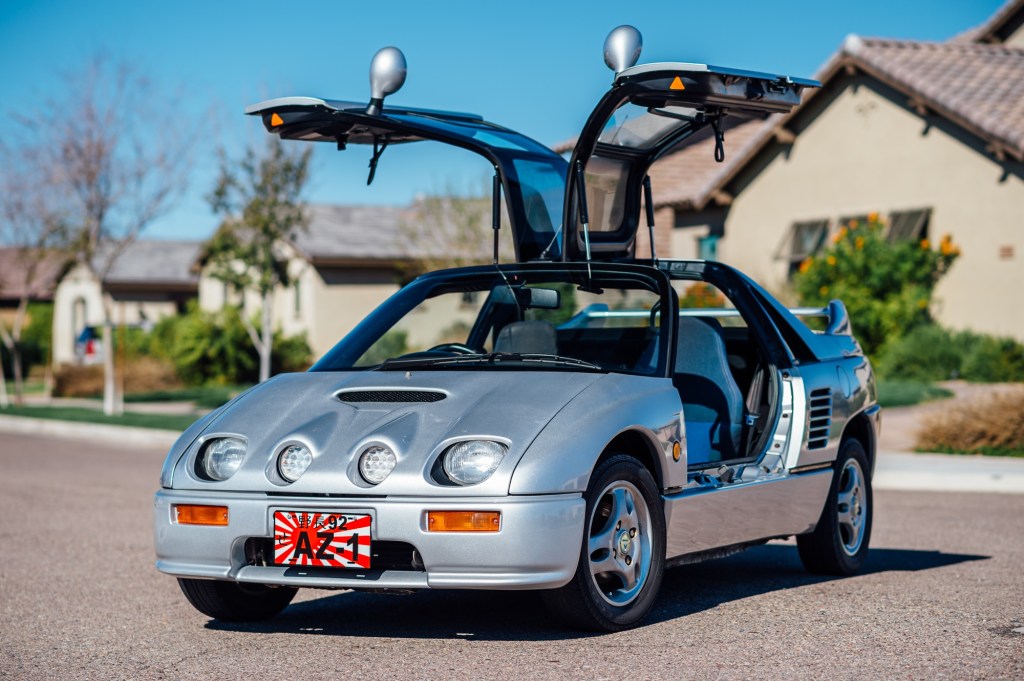
Like the Daihatsu Taft, the Autozam AZ-1 is a Japanese kei car. As Petrolicious explains, the kei car was created as a cheap, compact way to get the Japanese population mobile after WWII.
The class still exists and is heavily regulated to limit each kei car’s engine capacity and dimensions. The bonus is that these kei cars aren’t just inexpensive, they’re easier to park and register. The mid-engine, gullwing-door Autozam AZ-1, though, comes from a slightly different time.
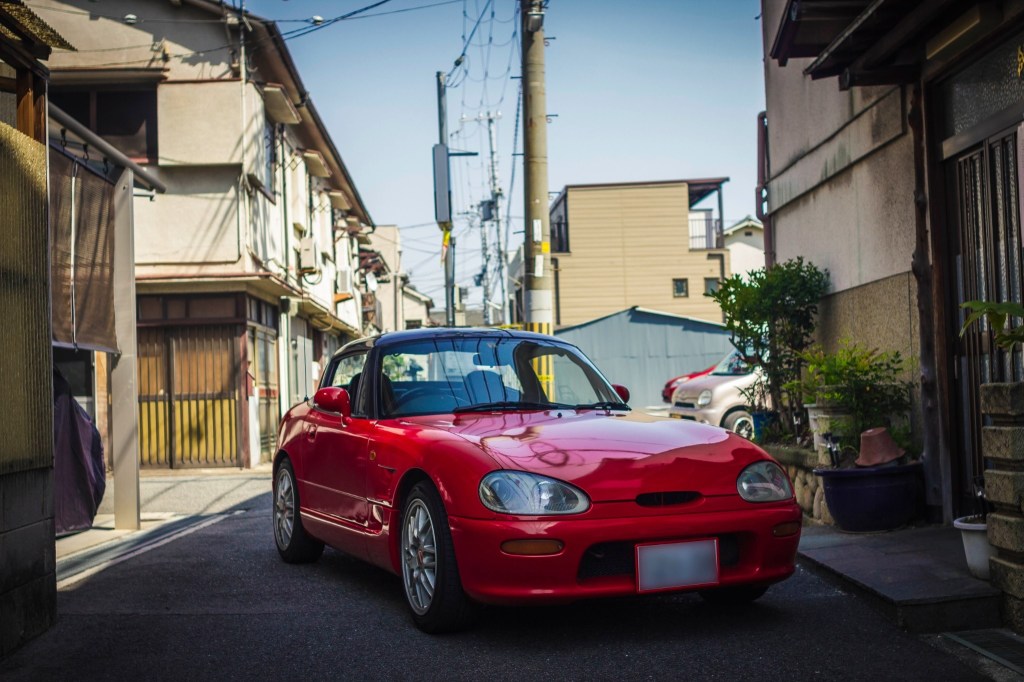
In the late 80s, Automobile Magazine explains, Japan was going through an economic boom. Japanese automakers were flush with cash and able to fund high-dollar projects like the Nissan Skyline GT-R. And during this time, the companies wanted to make kei cars that were genuinely sporty. During this time, Suzuki made a series of mid-engine concepts that eventually turned into the front-engine Cappuccino mini-convertible sports car.
Mazda then took over the project, Road & Track reports, and created 3 additional concepts, picking one to develop further. The car would be sold under Mazda’s Autozam division (think Lexus, but for Mazda). Thus, in 1992, the Autozam AZ-1 debuted for the Japanese market.
What’s the Autozam AZ-1 like to drive?
Being a kei car, the rear-wheel-drive Autozam AZ-1 couldn’t have a very large engine. Not that it would have fit, anyway: the AZ-1 is roughly 2 feet shorter than a Mazda Miata, Car and Driver reports. Its engine is a 657cc turbocharged three-cylinder from Suzuki, which produces 63 hp and 63 lb-ft. It’s mounted in the middle and linked to a 5-speed manual.
But, while it might not be powerful, the Autozam AZ-1 is light, weighing in at 1580 pounds. That’s only a bit more than a Caterham Seven. The AZ-1 also comes with 4-wheel disc brakes and independent suspension. And, of course, those gullwing doors. There was even a Mazdaspeed version, Automobile reports, which came with a limited-slip differential, a body kit, sportier suspension, and a sports exhaust.
On the road, the Autozam AZ-1 isn’t particularly quiet. Nor is it spacious, or even practical. However, as Jalopnik explains, it arguably defines the mantra of ‘slow car fast.’ That is, this car handles and communicates with its driver so well, it’s enjoyable at road-legal speeds. Automobile reports the steering is extremely quick, and that the car feels like an older Alfa Romeo 4C. And because the AZ-1 is so tiny and low to the ground, 35 mph feels like 70. To quote Car and Driver, “it’s everything modern cars aren’t—and that makes it delicious.”
Pricing and availability
The Autozam AZ-1 debuted roughly as the Bubble Era was beginning to collapse. Although it only cost the equivalent of $12,000 when it was new, relatively few were made. Automobile reports 4,392 Autozam AZ-1s were sold from 1992-1994.
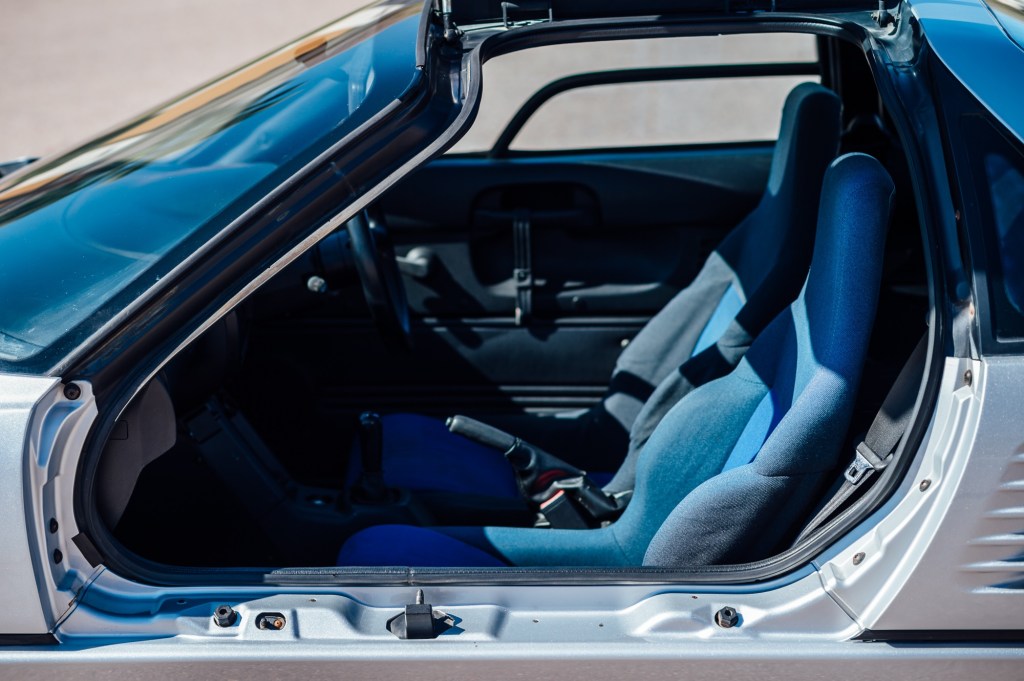
However, because of the 25-year import rule, these micro supercars are now freely importable. And they’re still relatively affordable, although they have appreciated somewhat. At the time of writing, Virginia-based Duncan Imports lists several at around $16,000-$18,000. The most expensive sold on Bring a Trailer was a limited-edition that went for $22,000 in October 2019.
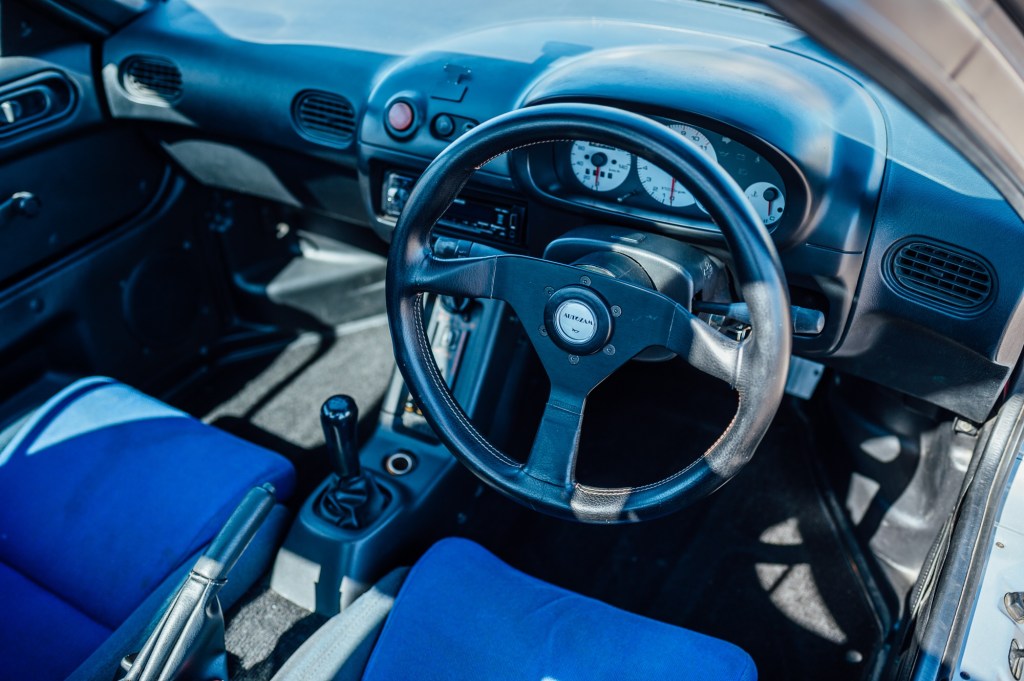
Considering you can get a Nissan Pulsar GTi-R for that much or a Toyota Celica GT4. But while those may be more practical, the Autozam AZ-1 is definitely a singular experience.
Follow more updates from MotorBiscuit on our Facebook page.


